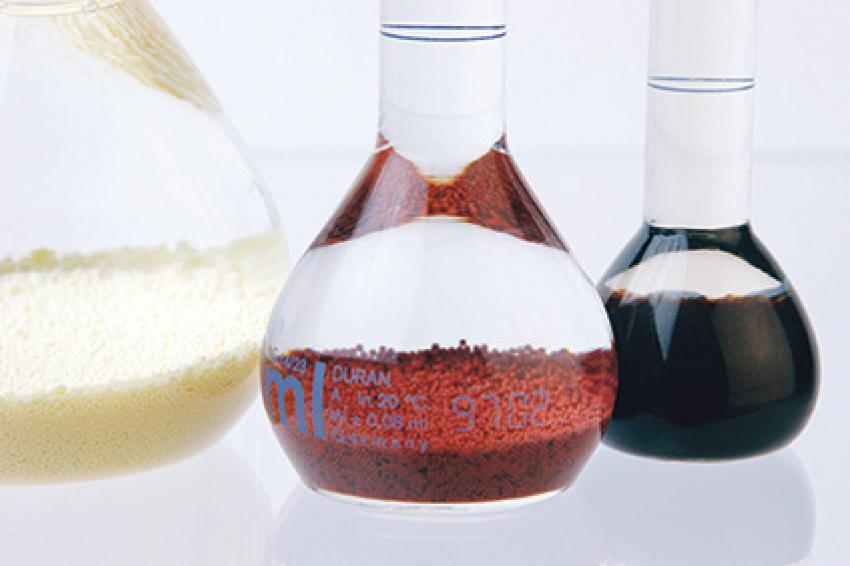Water – Fuel for Processes and Products
The Close Interlinkage of “Water and Energy” was Under the Spotlight on World Water Day 2014
Sustainable Management of Resources - Water is the origin of all life and is extremely important to each and every one of us. That is why, in 1993, the United Nations introduced an annual World Water Day that is held annually on 22 March as a means of focusing attention on the importance of freshwater and advocating for the sustainable management of freshwater resources.
The focus changes each year and in 2014 "Water and Energy" was under the spotlight. This raises another issue that, despite its importance, is rarely a subject of public discussion - the link between clean water and the global rise in energy demands. The chemical industry makes a major contribution to both these issues.
Industrial Use of water
Discussions relating to water and energy are often restricted to the generation of electricity at hydroelectric power stations. Naturally, huge quantities of water are required to keep the large turbine wheels turning but the quality and purity of the water used play only a minor role. Water from hydroelectric power stations can be used for other purposes without first having to be cleaned.
Other industries have far higher demands on water as a raw material though, whether used to generate electricity from fossil fuels or nuclear energy, in the chemical industry, for paper making or in the electronics sector. Even in mining, food processing, steel manufacturing and automotive engineering, virtually nothing is possible without water. For example, it takes 500 l of water to produce one kilogram of paper, some 10,000 to 20,000 l to build a car and as much as six metric tons of water to manufacture one metric ton of steel.
Worldwide, over 20% of all the water extracted from surface sources such as rivers, lakes and from groundwater is used for industrial purposes. In highly developed regions such as Europe, this figure is as high as 60%, whereas in developing countries it is just under eight%. In Germany, industrial usage accounts for as much as 84% of extracted water. Thermal power stations use some three-quarters of this - primarily for cooling purposes. Around 630 l of cooling water is required per day and per person simply to cover Germany's electricity requirements but most of this is recycled in closed circuits.
Over half the water used in the manufacturing industry - not counting cooling water for power stations - is required by the chemicals sector. This amounts to approximately 30% of the entire volume of water extracted in Germany. Other relatively large consumers of water include the mining industry, the manufacturing and processing of metal, the food industry, paper making and the printing sector.
Water Treatment for Safe Energy Generation
Complex chemical and mechanical treatment processes are needed for cooling water, process water and almost pure, completely desalinated water at power stations.
In most cases, ion exchange resins are used to soften and desalinate the feed water. This is essential because the high temperatures at the power station would otherwise cause the salts and alkaline minerals that are present in water to build up on the heating surfaces as boiler scale and form an insulating layer that would prevent heat transfer. This can lead to thermal stress cracks or even cause the boiler to burst and give rise to corrosion, abrasion and imbalance among components on the steam side, for example in the turbine.
A second, downstream step is sometimes required, for instance if the water contains a high proportion of organic substances. These, too, can damage the turbine and other components in the water-steam cycle. This second, downstream step is called reverse osmosis.
At the Chemnitz combined heat and power station, for instance, these membrane filter elements from Lanxess significantly lower the degree of fluctuation in water quality and, in particular, filter out organic substances. In addition to this, reverse osmosis can be used, for example, to desalinate brackish water or seawater to produce drinking water.
Ion exchange and reverse osmosis are complementary technologies and are therefore often combined to an optimal effect. Lanxess' LewaPlus software for the planning and design of complex water treatment plants combines the two technologies in a single planning tool so as to offer customers significant added value.
Conserving Resources through Multiple Usage
Thanks to numerous changes in production processes and ongoing optimization of water treatment, it has been possible to steadily reduce the consumption of water by using it several times. Here, too, products from the chemical industry have played a key role.
The number of times water is used in the paper industry has risen from 2.4 in the 1950s to about 12 at present. In the chemical industry, water is now recycled an average of 28 times before it is channeled downstream through the sewage clarification system and then allowed to re-enter the water cycle having been purified.
Further progress is still to come though, since the chemical industry serves as a link - in both senses of the word - between water as a raw material and energy generation. Germany's fourth-largest industry not only offers innovative approaches for the efficient use of water as a raw material but also provides solutions for resource-saving, sustainable energy generation. To mark this year's World Water Day, let's acknowledge the chemical industry's contribution to things we tend to take for granted - such as clean water and a reliable supply of energy - because this role will become even more important in the future.







